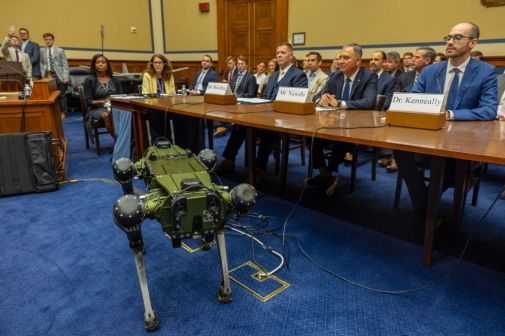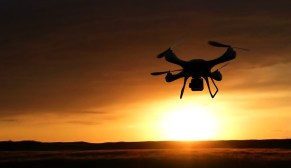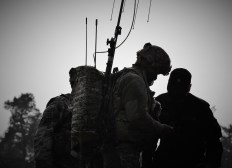Not just robots: Army plans for 2025 and beyond

The Army has made a prediction on what the battlefield will look like in the year 2025 and beyond: more technology-reliant than ever; and using sensor data, faster decision-making and human cognitive enhancement, as well as robotics and autonomous systems, to dominate the enemy.
The Office of the Army Chief Information Officer/G-6 released a predictive, scenario-based strategy update Thursday for the service’s long-term network modernization, shaped by “leap-forward technologies” and the adversary’s increased access to digital capabilities that level the playing field.
Lt. Gen. Robert Ferrell, Army CIO/G-6, introduced the strategy, “Shaping the Army Network: 2025-2040,” during a keynote at AFCEA’s Army IT Day Thursday. The new document takes up where others just like it for the Army’s near-term and mid-term strategies leave off in planning a servicewide network modernization, Ferrell said.
“What I challenged my team to do is to assume…all this effort of modernization is done — what’s next?” Ferrell said.
The plan focuses around five broad areas of emerging technologies that the Army CIO and his team think will play a big role in future battlefield dominance. They are dynamic transport, computing and edge sensors; data-to-decisive-action; human cognitive enhancement; robotics and autonomous operations, and cybersecurity and resiliency.
“It really gets at the capability of the Internet of Things, software-defined networks, advanced analytics, adverse sensors and actuators, and self-healing networks,” Ferrell said Thursday in Tysons Corner, Virginia. The strategy document goes into even more detail on the specific technologies the Army believes it will need to dominate, like robotics, which “may represent one of the most significant and game-changing technologies for the Army since the development of the tank in World War I.”
It even provides a fictional battlefield scenario in which a Joint Task Force, led by the Army, responds with a “battalion-sized raid” to a chemical warfare threat from a criminal gang called “Xipe Totec.” The adversary is headquartered in a “sprawling mega-city” on an island state where the government has “limited control” and is in any case not friendly to the U.S.
Using rodent-sized mini-bots and swarming micro-drones to map building interiors — along with sentient cyber-weapons and social media monitoring to seize control of local communications systems — the future task force is able to gather situational intelligence on the ground. When fused with surveillance data from satellites and other “national assets” overhead, this enables the soldiers, clad in robotic exoskeletons and employing a wide variety of lethal and non-lethal weaponry, to locate and destroy the biomedical facility where the toxin is being made, “neutralize” adversary leaders and leave before most people in the city even know they’re there.
“The technologies and the soldiers’ use of them described in this operational scenario are … believed to be entirely feasible by 2040,” states the document.
But’s not all gee-whizz — as in all conflicts, the enemy gets a vote, and emerging technologies may help adversaries level the playing field on which they are confronting the U.S.
“One development the military must closely watch,” the strategy explains, “is the growing availability of ever-increasing data processing power and faster transmission speed at lower cost. This trend gives resource-poor states, criminal organization and even individuals access to capabilities traditionally monopolized by advanced countries.”
“The pace of innovation in information technology is increasing the pace of operations, and our adversaries’ ability to influence our operating environment. The Army’s success in 2040 will depend on our retaining overmatch in both security and capability to provide freedom of action within the cyber domain while denying it to our adversaries.”
Then again, the Army could be way off — and it recognizes that.
“The projected technology developments described in this document may not all come to pass,” the document reads. “In fact, given the rapid pace of scientific advancement, the technology Soldiers eventually employ likely will differ from what is presented here. Therefore, investment strategies will likely need to be adjusted in the future as they will be influenced by global economics and still-unforeseen leap-ahead discoveries.”




